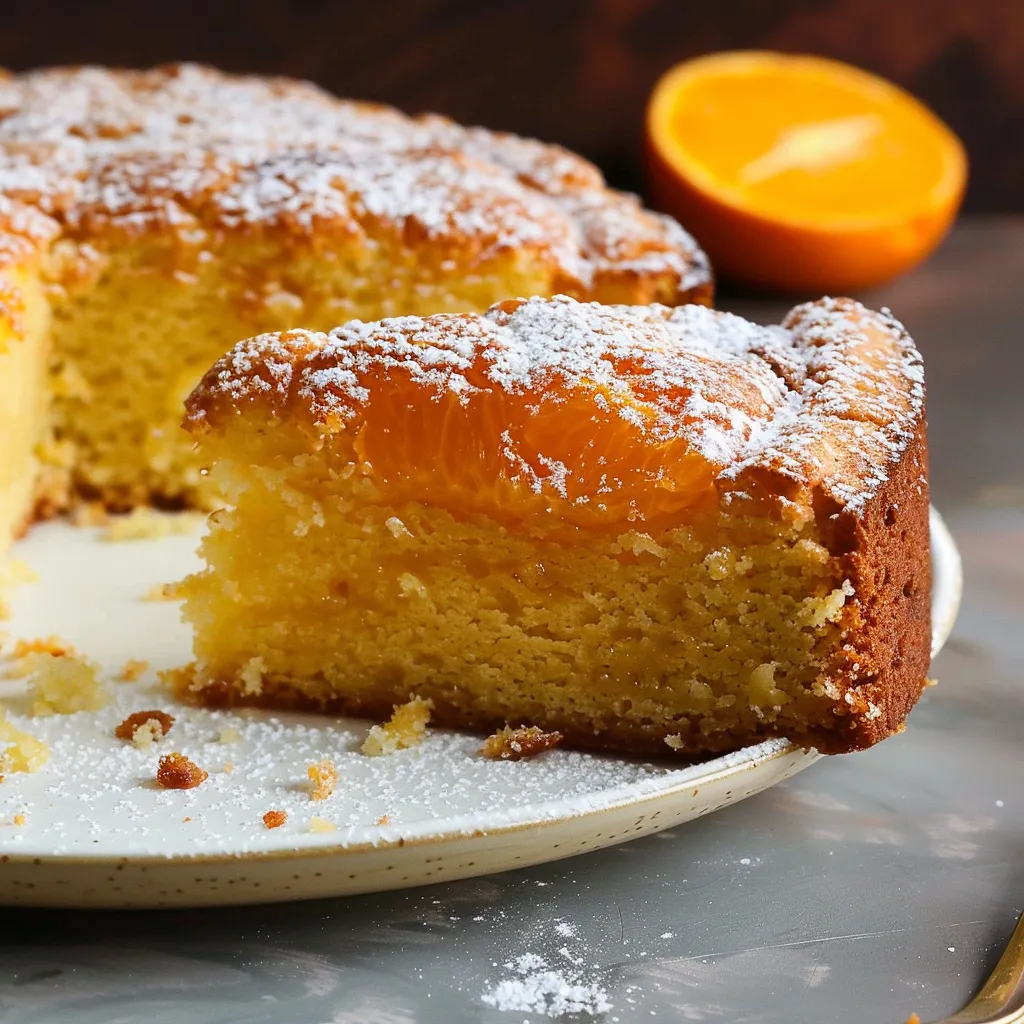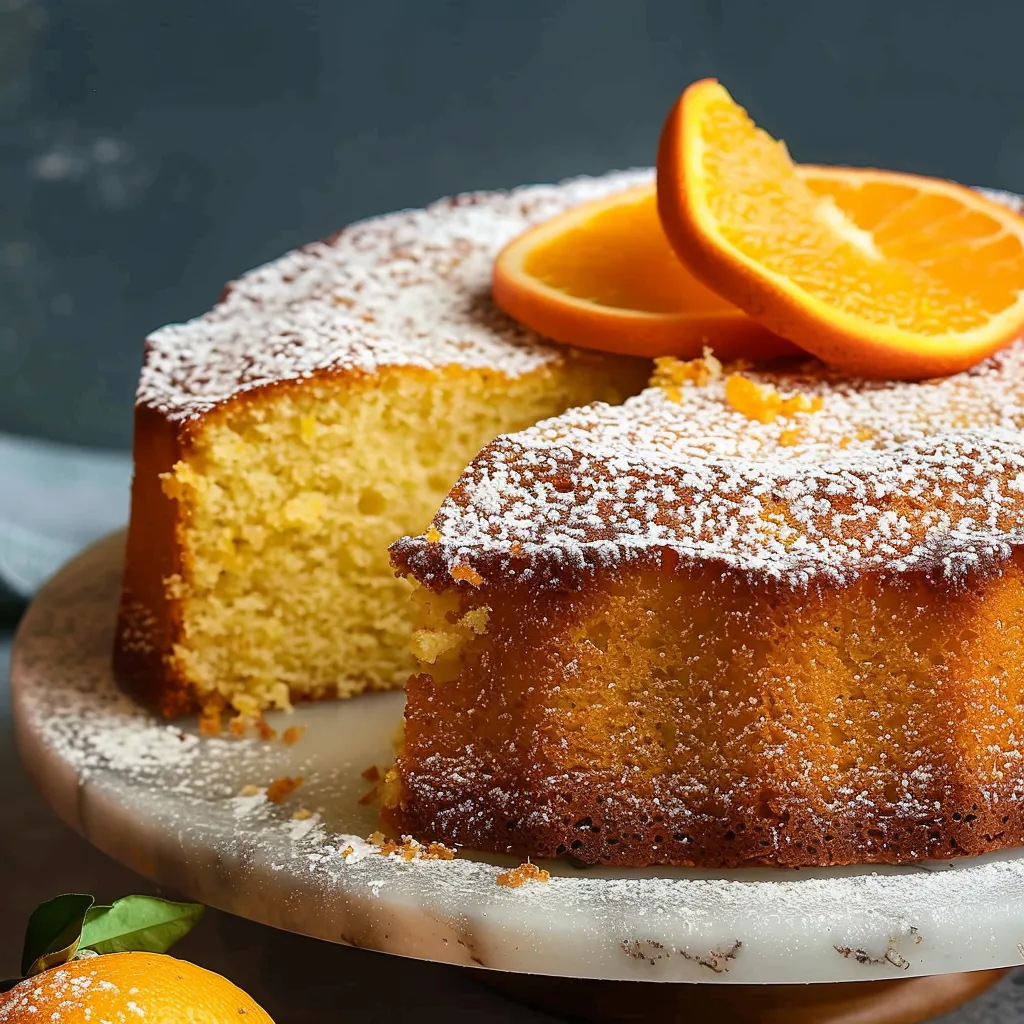 Pin to Favorites
Pin to Favorites
The moment you take your first bite of Orange Olive Oil Cake, you're greeted with a delicate balance of bright citrus and rich, fruity undertones. The tender crumb practically melts on your tongue, releasing layers of fresh orange essence while the olive oil provides a subtle complexity that elevates this cake far beyond ordinary citrus desserts. Each forkful delivers a perfect harmony of sweetness and depth, with a remarkably moist texture that somehow manages to feel both substantial and light. This Mediterranean-inspired creation transforms simple ingredients into something truly memorable—a sophisticated yet unpretentious cake that brings sunshine to your table.
Last week, I served this at a dinner gathering and watched as guests who initially took 'just a small slice' returned for seconds. There's something magical about the way the familiar comfort of orange pairs with the subtle complexity of olive oil to create something both familiar and intriguingly different.
Essential Ingredients and Selection Tips
- Olive Oil: Choose a mild, fruity extra virgin olive oil that you enjoy the taste of on its own. The flavor will shine through, so avoid anything too bitter or peppery.
- Fresh Oranges: Use bright, heavy oranges for both zest and juice. Organic is preferable for zesting, but if unavailable, wash conventional oranges thoroughly.
- Orange Extract: This optional ingredient intensifies the orange flavor without adding extra liquid. Even a small amount (¼ teaspoon) makes a noticeable difference.
- Milk: Higher-fat milk (whole milk) contributes to a more tender, rich crumb. Plant-based alternatives work but may slightly alter the texture.
 Pin to Favorites
Pin to Favorites
Detailed Cooking Instructions
- Prepare Your Workspace:
- Preheat your oven to 350°F (177°C). Grease a 9-inch springform pan and line the bottom with parchment paper.
- Create the Citrus Sugar Base:
- In a mixing bowl, rub 1 cup sugar with the zest of 2 oranges until fragrant and slightly damp.
- Develop the Structure:
- Add 3 eggs to the sugar and whip on high for 4-5 minutes until thick and pale.
- Incorporate the Olive Oil:
- Slowly stream in 1 cup olive oil while mixing on medium speed, then increase to high for 1 minute.
- Add Remaining Wet Ingredients:
- Mix in ¼ cup orange juice and ¼ cup milk.
- Incorporate Dry Ingredients:
- Whisk together 2 cups flour, 1½ tsp baking powder, ¼ tsp baking soda, and ½ tsp salt. Gradually fold into the wet mixture until just combined.
- Bake with Care:
- Pour batter into the prepared pan, sprinkle with sugar, and bake for 40-45 minutes.
- Cool Properly:
- Let cool in the pan for 15-20 minutes before releasing.
- Finish and Serve:
- Dust with powdered sugar and garnish with fresh orange slices.
My first attempt at this cake taught me the importance of quality olive oil. I used a peppery finishing oil that overpowered the orange flavor. Now I always select a fruity, mild olive oil specifically for baking, which creates a perfect harmony with the citrus.
The sugar topping transforms during baking into a delightful crisp crust that contrasts beautifully with the tender interior. This optional step adds both textural interest and visual appeal as the sugar creates a slightly crackled surface.
Olive oil cakes have a long history in Mediterranean baking, particularly in Spain, Italy, and Greece, where olive oil was more abundant than butter. This modern adaptation highlights the best of that tradition, with a focus on fresh citrus and a moist, tender crumb.
What makes this cake truly special is its chameleon-like ability to fit any occasion. Served simply with powdered sugar, it's a perfect pairing for morning coffee or afternoon tea. Dressed up with candied oranges or mascarpone cream, it becomes an elegant dessert fit for celebrations.
I find myself returning to this recipe throughout the year, not just for its delicious flavor but for the pure joy it brings to those who taste it. There's a moment of revelation when people take their first bite—an 'aha' expression that acknowledges this isn't just another orange cake, but something altogether more interesting and satisfying.
 Pin to Favorites
Pin to Favorites
Frequently Asked Questions
- → What type of olive oil should I use for this Orange Olive Oil Cake?
- Use a good quality extra virgin olive oil with a flavor you enjoy. A mild to medium-bodied olive oil works best so it doesn't overpower the orange flavor, but still provides that distinctive rich taste.
- → Can I substitute the whole milk in this recipe?
- Yes, you can substitute whole milk with plant-based alternatives like almond milk or oat milk. For richness closest to whole milk, full-fat coconut milk works well, though it may add a slight coconut flavor.
- → Why do you mix the orange zest with sugar before adding the eggs?
- This technique, called 'zest rubbing,' releases the essential oils in the orange zest into the sugar, intensifying the orange flavor throughout the cake rather than just getting occasional bits of zest.
- → Can I make this Orange Olive Oil Cake ahead of time?
- Yes, this cake actually improves with time as the flavors meld. You can bake it 1-2 days before serving and store it at room temperature in an airtight container. It stays moist for up to a week.
- → What can I serve with Orange Olive Oil Cake?
- This cake is delicious on its own, but pairs wonderfully with whipped cream, mascarpone, fresh berries, or a scoop of vanilla ice cream. For a more sophisticated dessert, serve with a dollop of Greek yogurt drizzled with honey.
